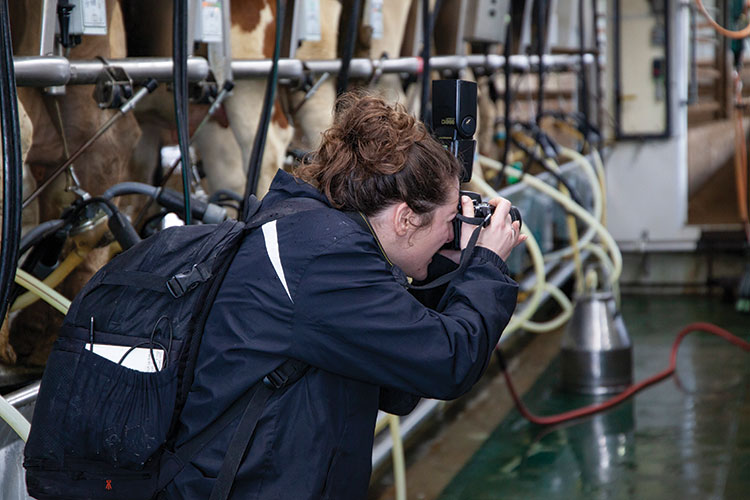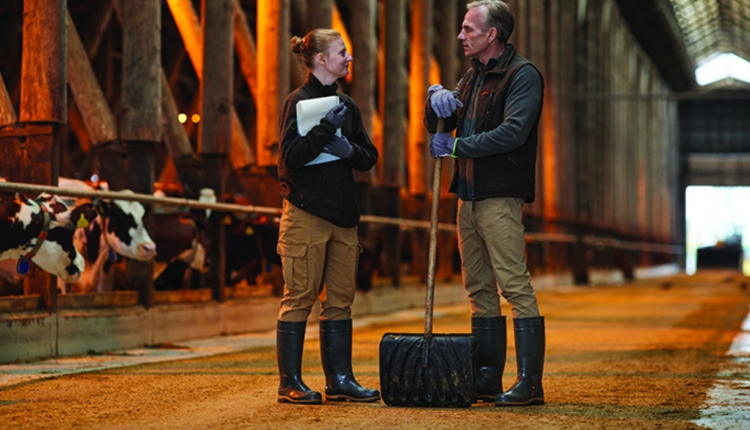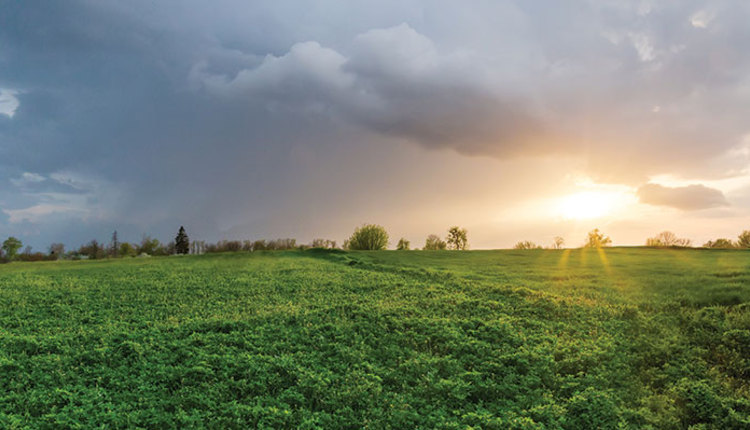
One of the best parts of my job is getting to be on some of the best-run dairies throughout Wisconsin. During those trips, I trade notes with some of the most conscientious dairy managers in the business. It’s intriguing to me to see how different operations carry out different business models, manage teams, and care for animals. I learn something new every day.
Unfortunately, there’s a shared trait among most of them that never ceases to surprise and disappoint me. I’m absolutely astonished as to how easy it would be for these operations to be infiltrated by an undercover anti-agriculture activist.
Here’s my perspective.
I walk through dairies and evaluate feed centers, forages, facilities, and farm systems. I’m taking samples, screening forage samples, and taking pictures . . . lots and lots of pictures. I have been on 47 dairies in the last 10 months. On almost every single dairy, I’ve taken pictures. Pictures help me communicate my thoughts to the dairy producer. I’ve taken pictures of feed centers, milking parlors, free-stall barns, and even hospital barns.
What are YOU doing?
On most of these dairies, it’s the first time I’ve visited, and I’m meeting the dairy staff for the first time. What has been alarming is that — at no point — has anyone ever approached me while taking pictures out in the barn and asked me, “Um, what are you doing?”
No dairy employee on any farm I’ve visited has met me with suspicion. Not once has anyone looked at me and given me the vibe that tells me that they’re uncomfortable with a person walking around their dairy taking pictures. In fact, the opposite is true, every dairy employee I’ve encountered has been gracious and eager to show me their work area.
Remember, most anti-ag activists are striving to blend in . . . or find a way to bribe an employee who already has unfettered access to animals. With enough financial lubrication, employees take footage of bad animal husbandry practices
This can also include taking video of everyday activities of perfectly acceptable animal handling practices and framing them in such a way to appear like animal abuse. There was one such damning video that was released a few years ago. It showed a cow with a scuff on her hock. Anyone who’s familiar with animal husbandry knows that some hair rubbed off of a cow’s hock is very common and is superficial. However, when framed with some sad music, the right lighting, and the right wording, it’s spun to look like a neglected or injured animal.
This is what scares me . . . the lack of camera policies on dairies I’ve visited. I have had unfettered access with my cellphone to photograph calving areas, hospital barns, hospital parlors, and hoof trimming areas.
Look through a different lens
There are countless areas on dairies that we see everyday that could be misconstrued by someone looking to ruin the reputation of a specific dairy or the greater dairy industry. Last week, I was doing a walk-through at a dairy and the veterinarian was conducting a herd check. It was a typical scene that takes place on almost every dairy; the veterinarian was using an ultrasound machine and the herd manager was walking in front, entering data in a hand-held computer and administering the ovsynch program.
Let’s look at this through the lens of an animal rights activist: What those of us in the dairy community understand as administering ovsynch protocols could be framed as “cows being injected with hormones and antibiotics on a daily basis.”
A veterinarian using an ultrasound machine becomes “animals are forcibly inseminated with hi-tech machines until they’re no longer able to reproduce.”
The use of self-locking head gates could be misconstrued as “cows have their heads forced between metal bars and are forced to stand for hours.”
Tugging at emotions
The people who make undercover videos aren’t looking to tell the truth, they’re looking to manipulate the emotions of people who have no understanding of modern agriculture. The first place these videos go is to the company whose name is on the label of the dairy product on the store shelves with the question, “Did you know this situation is taking place on the dairies that are producing the milk for your products?”
Let’s be honest: If you are infiltrated and videotaped by an anti-ag activist, how many tanker loads of milk are you going to have to dump? You are going to have to dump plenty because your farm will be “publicly radioactive.” The question: Will that radio activity dissipate before you go out of business?
Develop a policy
I’m not wanting to instill panic and put forth a doomsday scenario. I’m simply suggesting dairies put forth some policies to step up the security on their farms.
- Have the conversation. Emphasize that undercover videos can be made even without any sort of animal abuse. It’s all in how the video and images are presented to the public.
- There should never be a nonemployee allowed unfettered access to a dairy. Period.
- Have a picture and video policy and enforce it unwaveringly. Who is allowed to take pictures or film anything? What about tours? What about industry people visiting?
- If there’s anybody looking suspicious around the farm, employees should be encouraged to simply say something to their manager. Do not assume the best.
- Understand what animal practices are the most easily misconstrued and evaluate systems accordingly. Some that come to mind involve moving down cows or delivering calves.
A vibrant story
The dairy industry has a great story to tell, and it needs to be told. One of the major reasons that our consumers are easily fooled by these ill-intentioned activists is that we haven’t done enough to tell our story. It is absolutely imperative that we open our doors and show the consumers how we care for our cattle. We must be on social media, talking about our operations. We also have to engage in some potentially awkward conversations.
We must be the ones to tell the story as opposed to misinformed, anti-animal agriculture activists with an agenda. If we fail to converse with consumers, others will fill the void. Just have a few policies in place and initiate some conversations with the staff. We can open our doors and tell our story while greatly reducing the risk of being infiltrated by anti-agriculture animal rights activists.
Editor’s Note: This author was making the final edits to this article when a video related to animal care was released about Fair Oaks Farms. Given that situation, the editors encouraged the author to fastrack this article.









